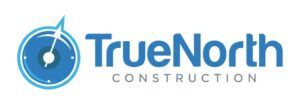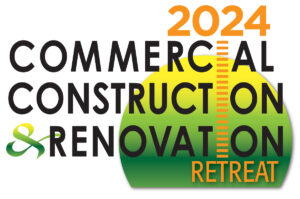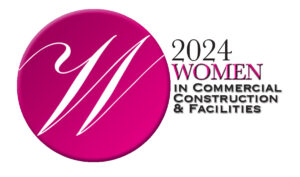Renovation loans have been around for a while and can be used to renovate your home. Every year, the housing market changes and so do the types of houses and their appeal. By using a renovation loan, allows you to get what you want out of your home without worrying about breaking the bank. But before you decide to go ahead with it, you should know certain things such as the types of renovation loans and how you can find the best lender. In this article, we will go through the most important ones and discuss what renovation loan is right for you.
What is a Renovation Loan?
With a home renovation loan, you’ll be able to pay for the renovation costs in one lump sum. You can use the loan amount to pay for contractors as well as the materials that go into your home project. The best thing about this type of loan is that it will help you save money by covering upfront costs. This means that you won’t have to spend more money and time getting materials or labor.
Depending on the lender or bank of your choice, you can borrow any amount from $50 to $15,000. You just need to provide documentation showing that you have enough funds available to pay for the loan, as well as other requirements like a credit report and proof of employment. They are also more flexible than other types of loans because they don’t require a long repayment period or a large down payment. They are also less risky than other loans because they don’t require collateral such as land or property deeds.
Types of Renovation Loans
There are several types of renovation loans and the best loan for you will depend on the circumstances and what kind of improvements you want to make. This includes:
-
Home-equity loans
The equity in your home is the difference between the home’s current value and the mortgage balance. Home equity loans are an excellent option to finance home improvements. It is a sort of mortgage in which you can borrow against your equity. Assume your home is now worth $750,000, and you still owe $450,000 on the mortgage, which means you own the remaining $400,000 – this is your raw equity.
They are accessible through banks and lenders, and their interest rates are often lower than those of other sorts of loans. You just need to show that you have sufficient equity in your property for the lender to authorize a loan for the project or renovation you wish to undertake. As proof that you have enough equity in your primary residence, you might use a home appraisal or a financial statement from your lender. Consider other financing options if you don’t have enough equity in your property.
-
Home-equity lines of credit
A home equity line of credit (HELOC) is a line of credit that uses your home as collateral. As you pay back the borrowed funds, your available balance will increase. The interest rate of a HELOC can either be fixed or variable and is usually much lower than unsecured loans because they are backed by an asset you own, in this case, your home.
The rates of HELOC may be adjustable, and they are determined by a standard market interest rate rather than something specific to your or your financial situation. Most home equity lines of credit have a fixed interest rate, which means that the rates and payments will remain the same throughout the lifetime of your line of credit.
-
Secured personal loans
Secured personal loans are loans that are secured against an eligible asset you hold, such as your home or car. If you fail to make your monthly payments, your collateral may be taken. If you apply for a secured loan, the procedure may take longer. You must also provide specific information, such as the worth of your own asset. Most personal lenders would also require that the asset be worth at least as much as the loan amount.
Samuel Davies of Fintech company Kallyss comments: “When you need a personal loan, you should always make sure you have exhausted the alternatives and that you only borrow the absolute minimum loan amount you need, to avoid falling into more debt, that you will do well to avoid. Used correctly, loans such as personal loans and lines of credit can help get you back on track with your finances.”
Secured personal loans offer more significant loan limits, sometimes reaching $100,000. However, this is dependent on the value of your asset. The interest rate is frequently lower as well. Because you’ve provided collateral, the lender’s risk is reduced. Low risk encourages the lender to give a greater interest rate.
-
Unsecured personal loans
An unsecured personal loan allows you to borrow money without pledging collateral.
In general, these loans are adaptable. You may use it to pay for anything, including vacation, a car, or house improvements. These loans often have higher interest rates and costs than secured loans. This is because you are borrowing without providing collateral.
You may borrow up to $50,000, while certain lenders may extend you a larger loan. The periods are typically between one and seven years. You might choose between a fixed and variable interest rate. You could also be able to acquire a personalized rate based on your credit score.
-
Green loans
A green loan is a personal loan designed for environmentally friendly and long-term home improvements. It can be used to buy a solar power system, a solar hot water system, or energy-saving equipment. It might also be used to install energy-efficient heating and/or cooling, insulation, and double glazing for windows.
These loans provide lower interest rates and more flexible repayment terms. However, there are restrictions on how the funds may be spent. Green additions or upgrades will be the extent of your remodeling. Green loans can be both secured and unsecured. Loan lengths range from six months to seven years. Borrowing restrictions are also adjustable depending on the modifications you require.
-
Mortgage Finance
If you already have a mortgage, you may be able to refinance or remortgage it. This might provide you with some extra funds for house upgrades. You may use the equity in your property to refinance your mortgage and receive a better bargain. You could either speak with your existing credit provider or look for another lender with lower interest rates and costs. Refinancing might provide you with finances to improve your property.
If you have a redraw facility on your home loan and have made additional payments, you might utilize it to fund your renovations and repairs.
-
Construction loans
A construction loan is a type of house loan for those who are building a new home or renovating an existing one. If you want to receive payments in installments, this loan is suitable. Rather than a lump sum payment from the lender, you will get the agreed-upon amounts in installments. This allows you to pay your bills at different phases of the restoration. You’ll need to set out a payment plan with your lender and, most importantly, stick to it. The amount you borrow remains set, but you will get it in installments.
With construction loans, you only pay interest on the amount borrowed, not the full loan. Additionally, some construction loans have an interest-only period at the beginning. This means that you will only be charged interest on what you borrow while the improvements are completed. After the modifications are completed, you will be required to repay the borrowed funds plus interest.
How to Find the Best Lender?
With so many lenders out there, it can be difficult to know where to start. Looking for the best lender is an important step because your lender will be responsible for paying off any debts on your home when it sells or refinancing it. They may also help you with other aspects of the renovation like securing permits and paying contractors who work on your property.
To find the best lender for you, start by looking at what their rates are so you can check whether your credit score will be okay for them or not. Next, compare those rates against other lenders who offer comparable services and financing options. When comparing loans from different lenders, remember that each one has different terms and conditions so make sure to read through all documents before signing anything.
Final Thoughts
There are lots of things you need to consider before choosing a renovation loan, and it can be difficult to weigh them all against each other. Ultimately, the most important thing to consider is the interest rate. A higher interest rate might mean paying more money over time, but if you take into account the fact that it might be easier to pay back a higher balance, the additional cost might be worth it in the long run.
Additionally, all types of loans require an application and credit check process, so do some research and find one that meets your needs and helps fund your home renovation project. As with any financial decision, do what’s best for you and your family, and purchase a home whose quality will last for years to come.
Author’s bio:
Marjorie Hajim is the SEO Manager for Friendly Finance. Friendly Finance is a leading no-credit-check loan matching service in Australia specializing in consumer finance. She loves growing businesses with a focus on their online presence and is passionate about organic growth and all things digital.









 The 2024 virtual Men’s Round Table will be held Q4, 2024, date TBD.
The 2024 virtual Men’s Round Table will be held Q4, 2024, date TBD.













